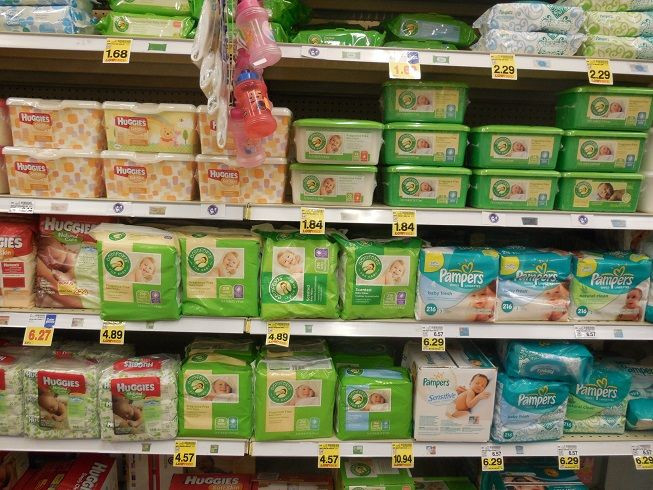Do Baby Wipes Cause Rashes? Doctor Links Preservative In Wipes With Cases Of Itchy, Scaly Skin

Baby wipes, those convenient, premoistened towelettes that are a staple of any home nursery, might cause red, scaly rashes in some children. According to a new study published Monday in the journal Pediatrics, some infants -- and adults -- might be allergic to a certain preservative in baby wipes called methylisothiazolinone.
Dr. Mary Wu Chang, a professor of dermatology and pediatrics at the University of Connecticut who authored the study, believes baby wipes are behind some cases of rashes often diagnosed as other, more serious conditions like eczema or psoriasis.
“Wet wipes are increasingly marketed in personal care products for all ages, and [methylisothiazolinone] exposure and sensitization will likely increase,” she wrote. “Dermatitis of the perianal, buttock, facial, and hand areas with a history of wet wipe use should raise suspicion of [allergic contact dermatitis] to [methylisothiazolinone] and prompt appropriate patch testing.”
According to NBC News, Chang was first tipped off to the baby wipes’ role in causing rashes after a mother whose 8-year-old had red, scaly skin around her mouth came to the University of Connecticut School of Medicine for answers. Chang treated the child with antibiotics and steroids, which cleared up the bizarre skin irritation temporarily, but the rash continued to resurface.
That’s when Chang remembered an earlier case study of a Belgian man who had experienced an allergic reaction to methylisothiazolinone. When Chang confirmed with the mother of the 8-year-old that she was using baby wipes to clean her daughter, and asked her to discontinue using them, the rash cleared up.
In her report, Chang documented five additional children in the U.S. who were diagnosed with acute contact dermatitis caused by methylisothiazolinone between March 2011 and January 2013. Chang confirmed the link between the chemical and the rashes using patch tests.
“I think it may be more common than people realize,” Chang told NBC News.
This doesn’t mean parents should eschew baby wipes. Chang noted that baby wipes are “extensively tested” and are generally regarded as “innocuous,” and that allergic reactions to them are few and far between.
“They’re so convenient,” Chang told NBC News. “I have three kids, so I know how hard it is to do the changes, especially when you’re traveling. But maybe when you’re at home, it would be better to use a gentle cleanser and water. That way you minimize exposure.”
Common causes of rashes on babies include diaper rash, which an inflammation of the baby’s skin caused by prolonged contact with a diaper, eczema, heat rash and cradle cap.
Previous research has found a link between the chemical in baby wipes and cases of dermatitis. An Australian study from May 2013 found that out of 653 patients who were tested for methylisothiazolinone allergy, 43 showed reactions. Patients responded to the preservative from multiple sources, including shampoos, conditioners, deodorants and skin cleansers. Seven were parents of young children who had a reaction to baby wipes.
“These data demonstrate for the first time that [methylisothiazolinone] is an emerging, important allergen in both cosmetic and occupational settings in Australia,” the study noted. “An important source of exposure was baby wipes, which was predominantly associated with hand dermatitis in parents.”
© Copyright IBTimes 2024. All rights reserved.






















